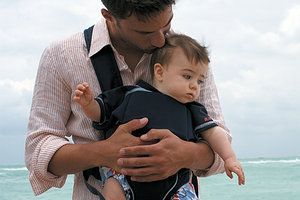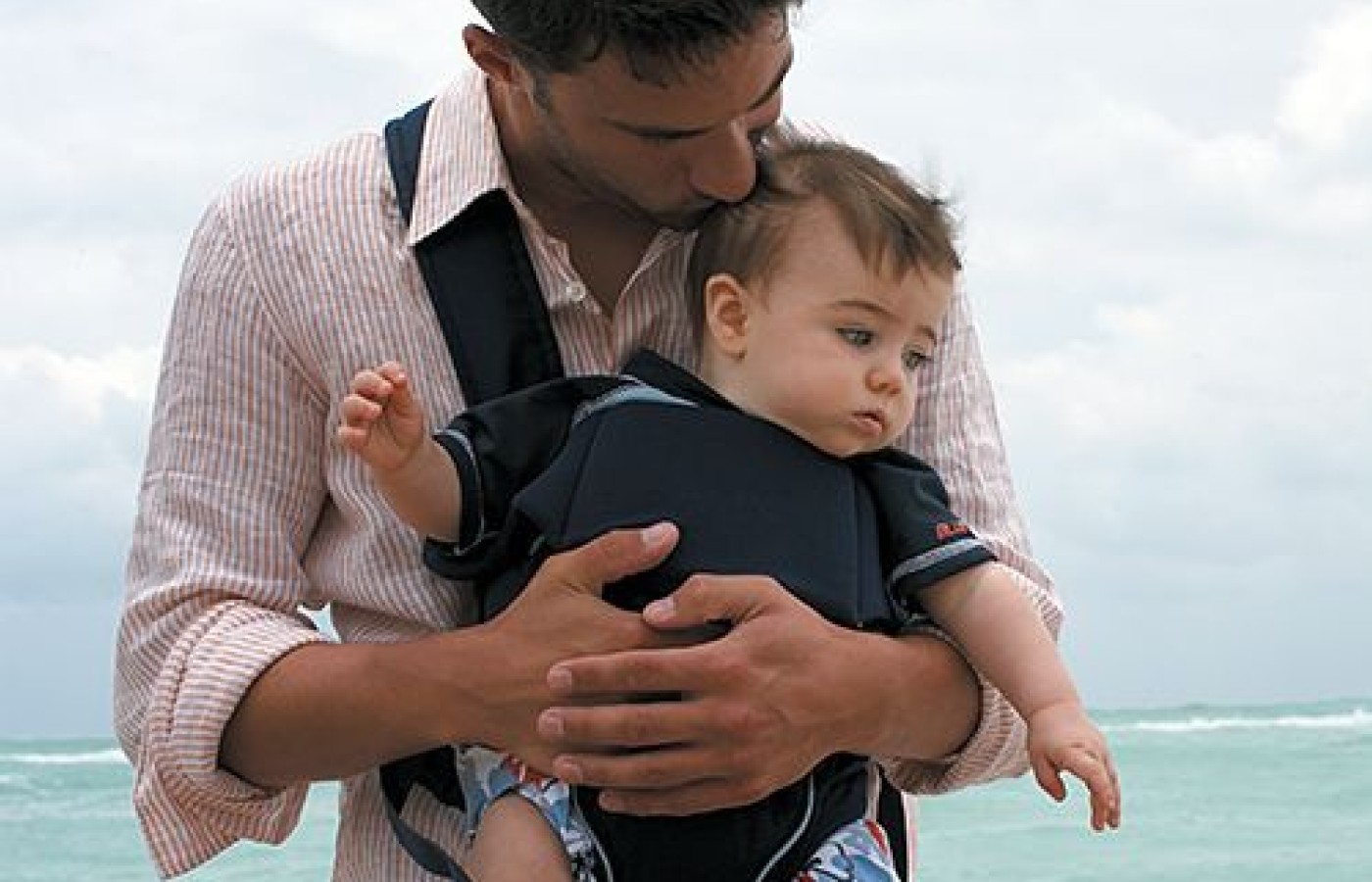Some doctors thrive in a personality-based clinic and have a loyal following no matter what services or equipment they offer, but for most chiropractic offices who are trying to grow and expand, new equipment purchases help us stay relevant and continue to service our client base in the best, most up-to-date manner possible. So, regarding equipment purchasing: should you lease, get a bank loan, or pay cash?
The Advantages of Baby Wearing
Since the beginning of the "Back to Sleep" program, which recommended that babies be placed on their backs in order to reduce the risk of SIDS, babies spend more time on their backs than ever. When we add in the time spent in baby carriers, it's no wonder there has been a significant increase in the number of babies with "flat head syndrome."1 However, the bigger concern here is not cosmetic, but instead the issue of cranial distortions potentially resulting in compromised neurological function.1 That's why it's key to educate parents on why infants should spend less of their awake time on their backs and show them alternative ways to accommodate improved baby positioning.
Why to Encourage Baby Wearing
The benefits of baby wearing are vast. For instance, research has shown that babies who are carried cry 43 percent less than those who aren't and 54 percent less during the evening hours, when colicky babies may be the most fussy.2

Babies that are worn while awake also spend much more time in a quiet and alert state, which is ideal for learning. Since they feel safe and secure, they are more open to outside stimuli, which is the world from their carrier's point of view, not the limited view available from their crib, car seat or stroller. Since they are closer to people and can study facial expressions, carried infants also are more socialized and will typically learn to speak sooner and be more familiar with body language, becoming independent at an earlier age.3
Carried or worn infants are also calmer because all their needs are being met, both their primal and survival needs. They can see, hear, smell, touch and even taste their primary caregiver. According to Dr. William Sears, the pediatrician who coined the phrase, "attachment parenting," being in this position for most of an infant's waking hours provides a motion that has shown to be beneficial for neural development, as well as gastrointestinal and respiratory health. The parental rhythms (walking, heartbeat, etc.) have a balancing and soothing effect on the infant.3 Due to the decreased amount of time spent on their backs, the risk of plagiocephaly or the above-mentioned "flat head syndrome" also is significantly reduced.4
| Recommendationsfor Choosing a Carrier When considering thepurchase of a baby carrier, tell parents to be sure to think about thefollowing:1
|
In many cultures, if the baby is awake, then it is being worn or carried by mom, dad or another caregiver. Anthropologists and psychologists studying the behavior of mother and child have determined that their interaction actually shapes behavior. When the baby seems in distress, mother offers a soothing touch or word. When the baby seems hungry, she offers her breast. When the baby focuses on her, she focuses back while smiling or talking in a loving tone. For each action of the baby, the mother responds. According to an article published by the La Leche League, "these sensitive, personality-shaping interactions happen most readily when babies are in the arms of their parents."5
Baby wearing is an opportunity to provide closeness, even when the parent cannot be providing the baby with their undivided attention. This also allows for multitasking: cooking, cleaning, running after a toddler, grocery shopping or performing any other typical parental task, while providing the infant continued security.5
Baby wearing also has physiological benefits for the mother, including increased oxytocin levels, leading to a more intimate maternal bond, easier breast-feeding and improved care, potentially lowering the incidence of postpartum depression.6
Additionally, since the hormone relaxin may be present up to nine months following delivery, this may be healthier for the mother's spine by preventing increased repetitive movements such as carrying her baby and less lifting of car seats, which may lead to postural or spinal misalignments.1
In fact, car seats should only be used while the infant is in the car. The American Academy of Pediatrics recommends that infants spend the least amount possible in seating that maintains a supine or reclined position, including car seats, unless they are actually a passenger in a vehicle. It is best for infants to be upright while being held, carried or worn.7
Some parents have expressed concern that a baby who is constantly held or worn will become fussy and demanding of attention, but studies have actually shown the opposite is true. Apparently, babies who are worn tend to be more satisfied and secure.5
How to Wear a Baby
With the increase in information available, baby wearing has become more popular, so a wide variety of slings and carriers is now available. Slings with rings can be used for newborns, older babies and toddlers. The sling is typically adjusted by running the tail fabric through the rings and then tightening or loosening it until the wearer feels comfortable. With a sling, the baby can be positioned on the parent's front, side or back. Pouch carriers are similar to slings, but offer fewer options for adjustment and generally hold the baby in the front or back only.5 Another option is long, tied wraps, which are 12 feet long and made of woven or knit fabric. The wearer wraps and ties the fabric around her and the baby to keep the infant secure.5
More common, but not always the best, is the backpack or front carrier. Since the design is more rigid in structure, it doesn't always offer options for infant positioning, and they are not flexible from one wearer to the next. Should parents choose to go this route, tell them it would be wise to purchase two so the straps and clips don't have to be adjusted when being used by more than one wearer.5
References
- "Baby Wearing: Suggestions for Carrying Your Baby." International Chiropractic Pediatric Association, Oct. 23, 2008.
- Hunziker UA, Barr RG. Increased carrying reduces infant crying: a randomized controlled trial. Pediatrics, 1986;77:641-8.
- "Benefits of Babywearing." Available at AskDrSears.com.
- Persing J, et al. American Academy of Pediatrics Committee on Practice and Ambulatory Medicine, Section on Plastic Surgery and Section on Neurological Surgery. Prevention and management of positional skull deformities in infants. Pediatrics, July 2003;112(1):199-202.
- La Leche League. "The Benefits of Baby Wearing." New Beginnings, Nov-Dec 2004;21(6):204-208.
- Morris D. What Comforts a Baby? In: Babywatching. New York: Crown Publishers, Inc., 1992.
- Klaus M, Kennell J, Klause P. Bonding. Addison Wesley Publishing Company, 1995.



